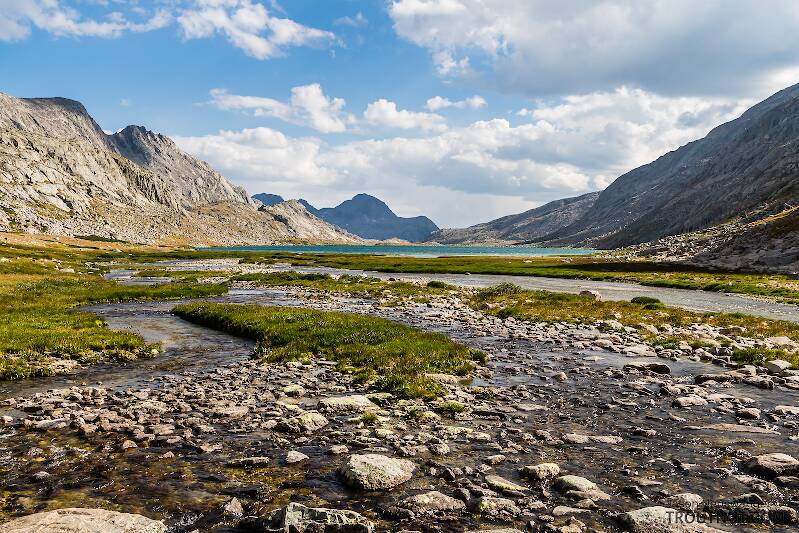
Salmonflies
Pteronarcys californica
The giant Salmonflies of the Western mountains are legendary for their proclivity to elicit consistent dry-fly action and ferocious strikes.
Featured on the forum

Troutnut is a project started in 2003 by salmonid ecologist Jason "Troutnut" Neuswanger to help anglers and
fly tyers unabashedly embrace the entomological side of the sport. Learn more about Troutnut or
support the project for an enhanced experience here.
Turboboy
Posts: 5
Posts: 5
Turboboy on Apr 10, 2007April 10th, 2007, 5:52 am EDT
hello everyone, stumbled across this sight and have enyoyed reading some of the well written informative answers. i wanted to run a half baked theory of mine i came up with while being frustated by picky browns during a sulpher hatch last summmer.
it seemd like the like the vast majoriy of fish in a slow pool were feeding on emergers in the surface film , letting the floating duns pass but all of my assortment of emergers ,parachutes ,greased nymphs were being passed over. my theory is that the fish were keying in on the emergers as they rose to the surface but would wait till they were in the surface film to take them. so anything dead drifted went ignored as it did not have the keying rise to the surface beforehand.
pulling a snowshoe type emerger under the water and letting it pop to the surface or fishing down and across seemed to put down the fish in the slow water . anyone have input and or ways to mimic the emerger rise to the surface.?
it seemd like the like the vast majoriy of fish in a slow pool were feeding on emergers in the surface film , letting the floating duns pass but all of my assortment of emergers ,parachutes ,greased nymphs were being passed over. my theory is that the fish were keying in on the emergers as they rose to the surface but would wait till they were in the surface film to take them. so anything dead drifted went ignored as it did not have the keying rise to the surface beforehand.
pulling a snowshoe type emerger under the water and letting it pop to the surface or fishing down and across seemed to put down the fish in the slow water . anyone have input and or ways to mimic the emerger rise to the surface.?
Softhackle on Apr 10, 2007April 10th, 2007, 7:01 am EDT
Turbo,
Yes. I would say the Leisenring Lift method does a good job as does the downstream swing. You need a wet fly- soft-hackle or flymph. The term flymph actually was coined by Vern Hidy to denote an emerging insect.
The Leisenring Lift was a method used to imitate hatching insects where the fly is fished from bottom to top. The lift is executed in water 2-3 feet deep where you know there is a fish or think there is. There should be no obstructions in the water above for 15 to 20 feet upstream. The fly is cast upstream, allowed to sink to the fishs level and when it reaches the trout, the fly is activated by checking the progress of the rod. This causes the fly to rise in the current to the surface.
If you purposefully pull or activate the fly this is more of an induced take, which also will work. The downstream swing is explained by going to this web page. Copy and paste this address into your browser URL window: http://www.flyanglersonline.com/features/oldflies/part402.html
This will explain a few methods that are useful for simulating the emerger. To me, the soft-hackled or wingless wets as well as some winged wets do well in imitating emerging flies that are rising to the surface to hatch.
Mark
PS-The exact reason for the article is illustrated in your question. After reading it again, it is obvious you are looking for a solution to the problem using dry flies or semi dry flies. I have my doubts that an emerging insect CAN be imitated by using dry flies. Wet flies must be considered.
Yes. I would say the Leisenring Lift method does a good job as does the downstream swing. You need a wet fly- soft-hackle or flymph. The term flymph actually was coined by Vern Hidy to denote an emerging insect.
The Leisenring Lift was a method used to imitate hatching insects where the fly is fished from bottom to top. The lift is executed in water 2-3 feet deep where you know there is a fish or think there is. There should be no obstructions in the water above for 15 to 20 feet upstream. The fly is cast upstream, allowed to sink to the fishs level and when it reaches the trout, the fly is activated by checking the progress of the rod. This causes the fly to rise in the current to the surface.
If you purposefully pull or activate the fly this is more of an induced take, which also will work. The downstream swing is explained by going to this web page. Copy and paste this address into your browser URL window: http://www.flyanglersonline.com/features/oldflies/part402.html
This will explain a few methods that are useful for simulating the emerger. To me, the soft-hackled or wingless wets as well as some winged wets do well in imitating emerging flies that are rising to the surface to hatch.
Mark
PS-The exact reason for the article is illustrated in your question. After reading it again, it is obvious you are looking for a solution to the problem using dry flies or semi dry flies. I have my doubts that an emerging insect CAN be imitated by using dry flies. Wet flies must be considered.
"I have the highest respect for the skilled wet-fly fisherman, as he has mastered an art of very great difficulty." Edward R. Hewitt
Flymphs, Soft-hackles and Spiders: http://www.troutnut.com/libstudio/FS&S/index.html
Flymphs, Soft-hackles and Spiders: http://www.troutnut.com/libstudio/FS&S/index.html
GONZO on Apr 10, 2007April 10th, 2007, 12:49 pm EDT
Turbo,
Mark's advice is excellent. I would only add that sulphurs don't necessarily wait until reaching the surface to emerge from the nymphal shuck. Hence, yellow-bodied soft hackles and wets like the Little Marryat are often deadly as they swing toward the surface. Fish that are sensitized to dry flies may feed heavily on these subsurface emergers and only take on the surface when drawn there by the rising flies. If nymph patterns aren't working well near the surface, these flies often will.
Mark's advice is excellent. I would only add that sulphurs don't necessarily wait until reaching the surface to emerge from the nymphal shuck. Hence, yellow-bodied soft hackles and wets like the Little Marryat are often deadly as they swing toward the surface. Fish that are sensitized to dry flies may feed heavily on these subsurface emergers and only take on the surface when drawn there by the rising flies. If nymph patterns aren't working well near the surface, these flies often will.
Turboboy
Posts: 5
Posts: 5
Turboboy on Apr 11, 2007April 11th, 2007, 4:19 am EDT
thanks guys i will try this approach , sulphers seems a long way off at this time but bring on the hendricksons!
Sayfu
Posts: 560
Posts: 560
Sayfu on Oct 28, 2011October 28th, 2011, 7:46 am EDT
I avoid putting them down, at least try to, by only putting the leader over the water, and not much flyline, then carefully moving the fly out of the zone, and casting again when I fish down and across, and never long casts. But a method not used that frequently in waters I have fished is to fish a floating nymph, often a PT nymph works well, in the film. Knowing the bug cycle again, and knowing the bug emerges at the surface is important. It has been suggested by Neil Streeks if I am not mistaken that sulphurs that get heavily fished in the riffles, will take a dry early on, and then may turn to a "twitch" a trigger mechanism that the emerging bug makes that causes them to feed on the emerger that can be near impossible to imitate. Sounds like a good theory, because I have had great results fishing over PMD's, and then days with a lot of fish out in front of me, and can not get a take.
Quick Reply
Related Discussions
Topic
Replies
Last Reply
5
Mar 9, 2020
by Troutnut
by Troutnut
1
Nov 3, 2015
by Kschaefer3
by Kschaefer3
0
Mar 23, 2010
by Troutboomer
by Troutboomer
2
Mar 28, 2016
by Kschaefer3
by Kschaefer3



